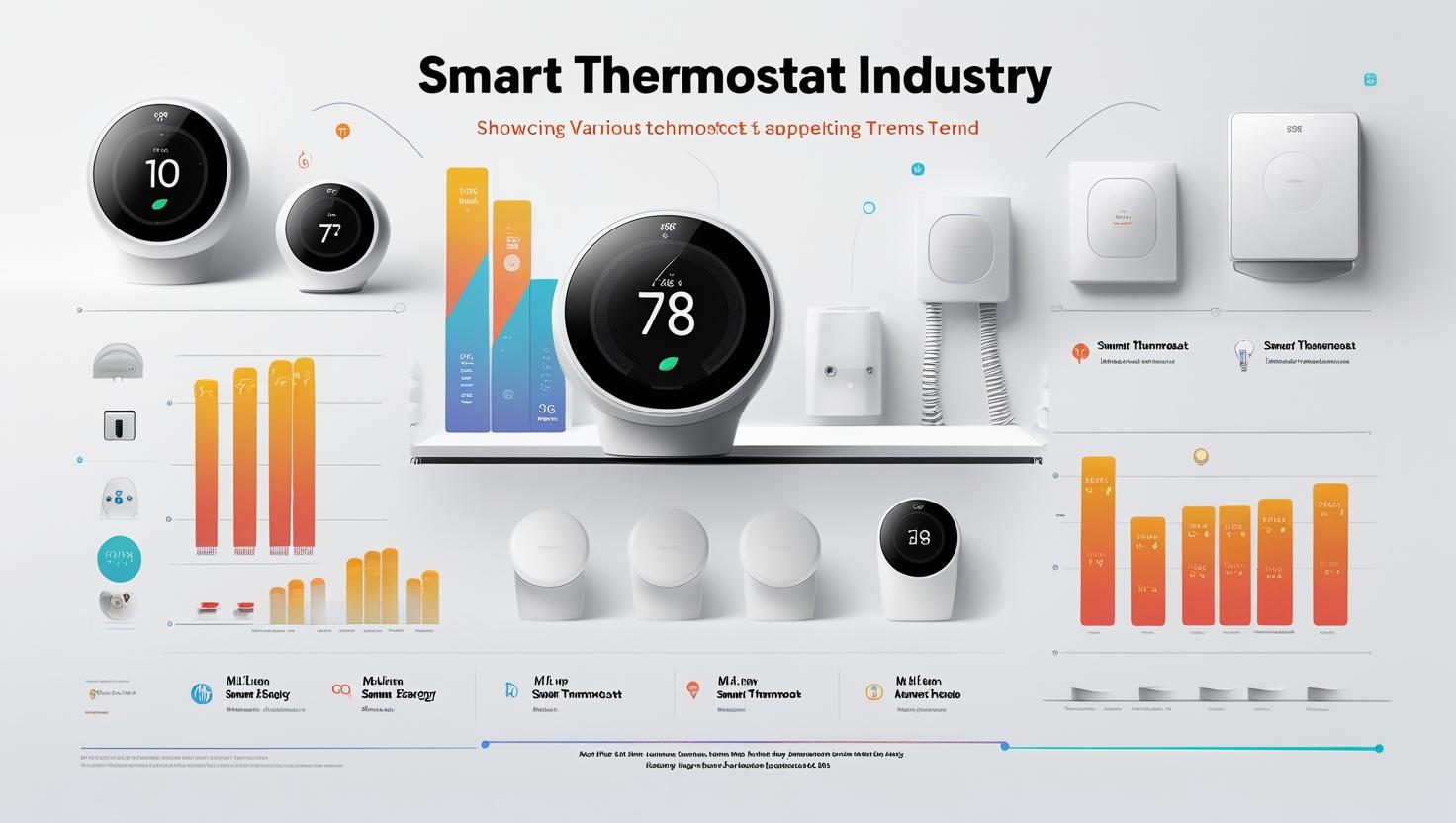The global smart thermostat industry is undergoing a rapid transformation, fueled by advancements in artificial intelligence (AI) and machine learning (ML). These technologies are not only enhancing the capabilities of smart thermostats but are also redefining how we interact with and manage indoor climates. From predictive temperature adjustments to energy optimization, AI and ML are becoming the backbone of intelligent climate control systems, offering unprecedented convenience, cost savings, and environmental sustainability.
At the core of this revolution is the ability of AI to analyze large volumes of data from various sources—such as occupancy sensors, weather forecasts, user habits, and energy pricing trends—and use this data to make real-time, intelligent decisions. Traditional thermostats, whether manual or programmable, rely heavily on user input to function. In contrast, AI-powered smart thermostats learn from user behavior and environmental conditions to automatically adjust temperatures for optimal comfort and efficiency.
Download PDF Brochure @ https://www.marketsandmarkets.com/pdfdownloadNew.asp?id=266618794

One of the key ways AI is changing the smart thermostat industry is through personalized climate control. Machine learning algorithms can track a user’s routine and preferences over time, learning when to adjust the heating or cooling system to suit their daily schedule. This means users no longer need to manually program their thermostats. Instead, the system proactively adapts to their lifestyle, whether they are at home, asleep, or away at work. This personalization leads to more consistent comfort levels and reduces unnecessary energy consumption, resulting in lower utility bills.
Predictive maintenance is another area where AI is making a significant impact. Smart thermostats equipped with AI can monitor HVAC system performance and detect anomalies that may indicate mechanical issues or inefficiencies. By alerting homeowners or facility managers to potential problems before they escalate, these systems help reduce repair costs, extend equipment lifespan, and avoid unexpected breakdowns. AI-driven diagnostics are also invaluable for energy providers and utility companies that manage heating and cooling systems on a larger scale, allowing for more efficient load management and resource planning.
Moreover, AI and ML enable smart thermostats to integrate seamlessly with other smart home devices and systems. For example, thermostats can collaborate with smart blinds, ceiling fans, and window sensors to optimize indoor temperatures more holistically. AI algorithms coordinate these devices to work in unison, minimizing energy use without compromising comfort. The result is a truly connected home ecosystem that responds dynamically to both external conditions and user preferences.
Another critical advancement is real-time energy usage monitoring and optimization. AI-driven smart thermostats can access dynamic energy pricing data and adjust temperature settings to reduce energy usage during peak hours. This feature not only helps homeowners save money but also contributes to grid stability and energy sustainability. Some systems even allow users to set preferences for eco-friendly operation, prompting the thermostat to favor energy-saving settings whenever possible.
AI is also transforming the user interface of smart thermostats, making them more intuitive and accessible. Natural language processing (NLP) allows users to interact with their thermostat through voice commands, mobile apps, or smart assistants like Amazon Alexa or Google Assistant. This shift toward conversational interfaces further reduces the learning curve and enhances user engagement with energy-saving practices.
The combination of AI and big data analytics is proving especially beneficial in commercial and industrial settings. Building managers can use AI-powered thermostats to regulate temperatures across large facilities, using ML to balance energy loads while ensuring comfort in different zones. These systems can also factor in occupancy patterns, external weather conditions, and operational schedules to fine-tune climate control strategies in real-time, thereby reducing overall energy consumption and improving operational efficiency.
Looking forward, the role of AI in the smart thermostat industry is expected to deepen with the integration of next-generation technologies such as edge computing, 5G, and advanced IoT frameworks. These innovations will enable faster decision-making, enhanced automation, and even greater personalization. AI-driven smart thermostats will likely evolve into full-fledged energy management hubs capable of interfacing with electric vehicle chargers, solar power systems, and smart grids.
Frequently Asked Questions (FAQs) on the Smart Thermostat Market
- What is a smart thermostat and how does it work?
A smart thermostat is a Wi-Fi-enabled device that automatically adjusts heating and cooling settings for optimal energy efficiency and user comfort. It uses sensors, machine learning, and user preferences to learn patterns and create automated schedules, and can be controlled remotely via smartphone apps, voice assistants, or integration with smart home systems. - What is driving the growth of the smart thermostat market?
The smart thermostat market is primarily driven by rising demand for energy-efficient HVAC systems, increasing adoption of smart home technologies, government incentives for energy-saving devices, and growing awareness about sustainability and carbon footprint reduction. - Who are the key players in the smart thermostat market?
Leading companies in the smart thermostat market include Google Nest, Ecobee, Honeywell Home (Resideo), Emerson, Johnson Controls, Bosch, and Schneider Electric, all of which offer a range of innovative and connected climate control solutions. - What are the key features of a smart thermostat?
Key features include remote control via apps, learning algorithms that adapt to user behavior, energy usage reports, voice assistant compatibility (like Alexa or Google Assistant), geofencing, weather tracking, and integration with other smart home devices. - How do smart thermostats contribute to sustainability?
Smart thermostats help reduce energy waste and greenhouse gas emissions by optimizing heating and cooling patterns, encouraging users to adopt energy-saving behaviors, and supporting integration with renewable energy systems.
See The Latest Semiconductor Reports:
Testing, Inspection, and Certification (TIC) Market by Service Type (Testing, Inspection, Certification), Source (In-house, Outsourced), Application (Consumer Goods & Retail, Agriculture & Food, Chemical, Energy & Power) – Global Forecast to 2030
Micro-Electro-Mechanical System (MEMS) Market by Sensor Type (Inertial Sensor, Pressure Sensor, Environmental Sensor, Optical Sensor), Actuator Type (Optical, Microfluidics, Inkjet Head, Radio Frequency), Vertical and Region – Global Forecast to 2030
